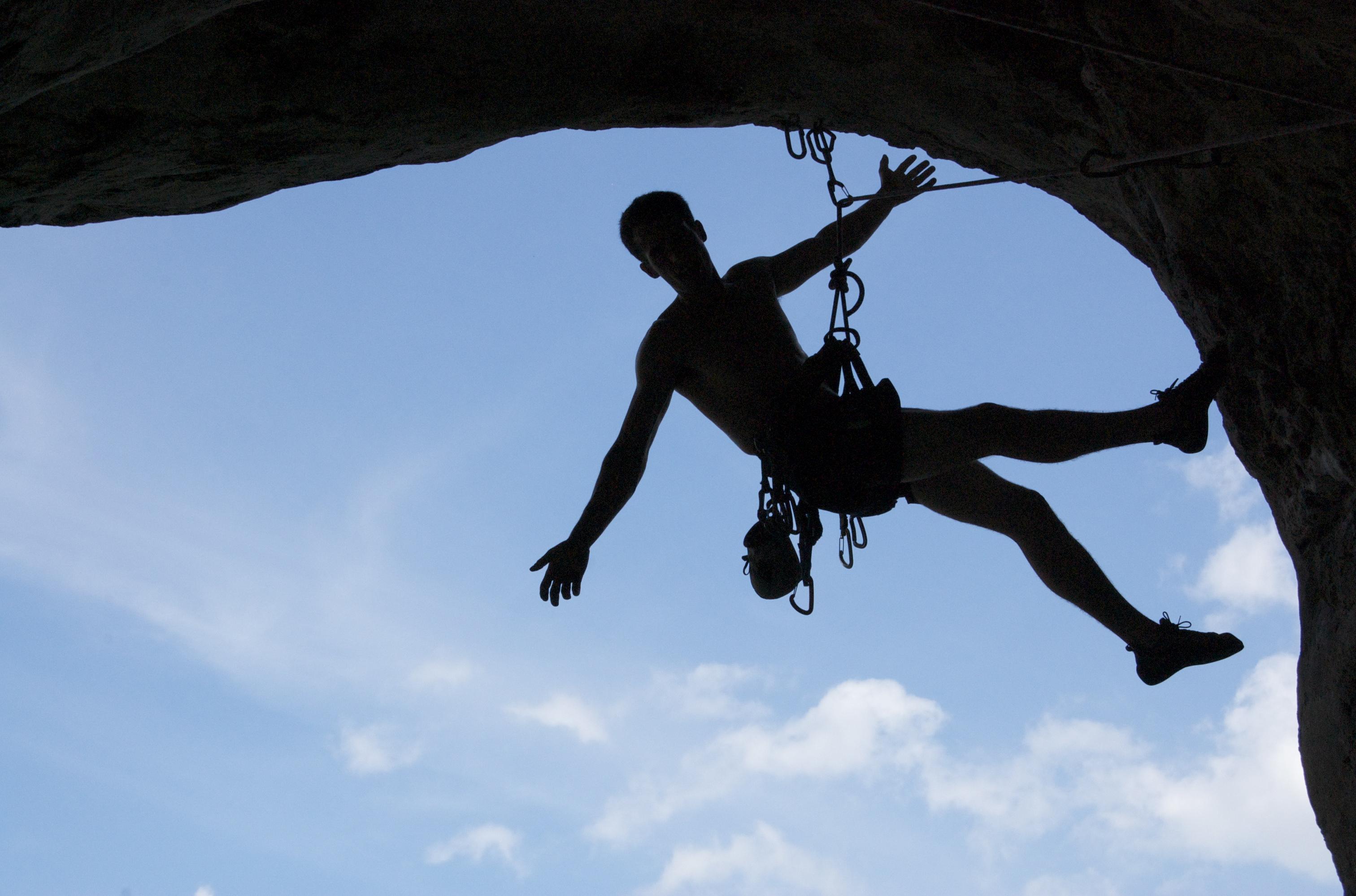
When it comes to fitness, the best sports are those that offer a great workout while engaging a number of different muscles in the body. Who doesn’t want to maximize their workout time, and tone and train as many parts of the body in as little time as possible? Check out these top three workouts which use your whole body – you might be surprised by which sports are best. And remember: any physical activity is better than sitting on the couch, so start easy or start slow, but start!
Rock Climbing
Rock climbing offers numerous benefits to those who partake, the most obvious of which is strength training. Whether indoors on a wall or outside on the real thing, rock climbing involves hoisting and balancing one’s entire body weight in all directions, using only the strength of the body itself. This builds muscles in the back, arms, legs and shoulders, and improves grip strength as well as building muscle in lesser-used body parts like the forearms, wrists and ankles. Constantly lifting and balancing one’s bodyweight, a climber learns to control and be more aware of his or her body, which is beneficial in many other athletic pursuits.
While the slower pace of rock climbing might lead one to believe it is not a big calorie burner, don’t be fooled. Rock climbing can burn up to 380 calories in 30 minutes, about triple the amount of calories burned by walking briskly in the same amount of time. The workout is anaerobic, which means it promotes strength, speed, endurance, flexibility and power through short bursts of intense exercise.
Mental focus is another benefit of rock climbing – just think about the concentration and trust in the body it takes to remain calm while dangling from the side of a cliff. Some even compare the meditative aspect of rock climbing to yoga. The combination of workouts for the body and mind benefits climbers when they go on to do other sports, and in other areas of daily life as well.
Naturally, it takes some balance to hold the body position required on a vertical, uneven surface and that is yet another benefit of rock climbing: improved flexibility and balance. When the body is extending to reach holds and rocks, it is practicing unusual movements and extending beyond its normal reach and limits. This flexibility is important for maintaining overall fitness.
Swimming
If dangling from the side of a rock 50 feet up in the air is not appealing, swimming is another great way to get a full-body workout with low risk of injury. This low-impact exercise uses water to cushion the body’s movements, which makes it ideal for those recovering from an injury or with a problem area, like bad knees. Many people aim for that “swimmers’ look” – muscle and definition without bulky size. This is achieved because the water gives enough resistance to build muscles all over the body, but not to such an extent that extra bulk is added. And speaking of all over the body, swimming works not only the arms, shoulders and legs, but also the upper back, chest, hips and groin.
Unlike rock climbing, swimming is absolutely an aerobic sport and therefore a great workout for the heart that also builds endurance and muscle. A 150 pound person can burn up to 900 calories during an hour of swimming because the body is using so many different muscle groups.
However, it’s not just the time spent swimming that equals an effective workout. Form and technique are also important. Without maintaining proper form, you can spend more time in the pool and still get fewer fitness results. For beginners, make sure swims are productive by resting after every couple of laps, so that good form is not lost due to exhaustion. It is also beneficial to learn how to breathe correctly and know the form of at least one stroke well enough so that time and energy don’t go to waste. After more practice, mixing in different swimming strokes will add more variety and target more muscle groups in an already well-rounded workout.
Boxing
Boxing is a very demanding sport. The combination of cardio, endurance and muscular activity will make even the fittest person pant. But for professional boxers, time in the ring is just one part of it. Boxing workouts generally include ring time as well as running, jumping rope, and punching a bag. For amateurs, it’s okay if the punch isn’t as efficient or aligned as the pros: boxing for fitness is about giving your best effort. Boxing is an amazing full-body workout; exercising the cardiovascular system and heart, strengthening and toning a slew of muscles all over the body, and burning up to 800 calories per hour. The chest, triceps, shoulders, core, back and legs will all feel the effectiveness of a workout in the ring.
Just like rock climbing, boxing has a mental aspect to it. Who hasn’t felt like punching something after a stressful day of work? Boxing allows a positive, physical release of anger, stress, frustration and anything else weighing on the boxer’s mind; making this sport a great aid to state of mind in and outside the gym. Also, boxing is not just limited to punching bags in specialized training facilities. While there are many boxing-specific gyms, standard gyms will often offer boxing or kickboxing classes. It’s also not hard to get started at home – all you need are gloves and a bag. And if you can’t find a bag, well, a willing partner will do.
Be Sociable, Share!
